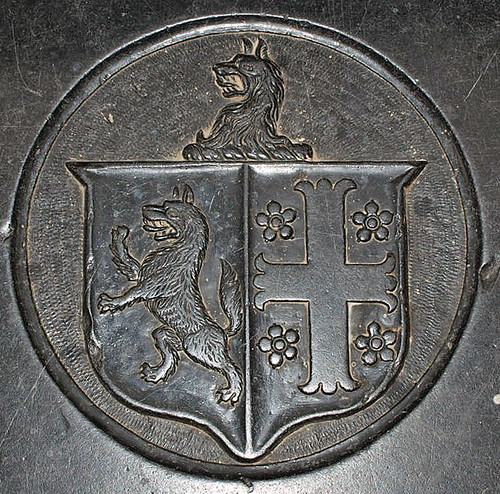ST MARGARET. Early C14 W tower, the bell-openings with Y-tracery. Handsome WEATHERVANE dated 1727. Two-storeyed S porch with the upper window flanked by niches. The nave and aisle windows all renewed, the chancel no longer in existence. It was already ‘ruinated’ in Blomefield’s time.* The N arcade of two bays dates from the C13. Round piers with round capitals and abaci, double-chamfered arches. The S arcade, judging by the sunk-quadrant mouldings, probably early C14. The piers are octagonal. The extra E bay is Victorian. - FONT. Octagonal, with four beasts and four seated figures against the stem, four beasts and four demi-figures of angels with shields against the bowl. On one shield the emblem of the Trinity, on another the Instruments of the Passion. - PLATE. Chalice and Paten, Norwich, 1704.
* The Rev. C. Cooper advises me of long-and-short work visible at the NW angle of the nave.
HEMPNALL. Here lie the Romans who trod these fields 1600 years ago. Their burial ground has been found in a field near the church, and some of the urns in which they laid the ashes of their dead are in the British Museum. The weather-beaten and embattled church, spacious and lofty indoors but looking best outside, stands high on a mound in the pleasant village street, with limes and beeches bordering the churchyard. It is chiefly 15th century, its tower crowned by a quaint pillared turret set within the parapet, its porch with an upper room, and a mass dial on the wall. The old font has angels and lions on the bowl, angels with crossed wings under the bowl, and five seated figures, worn with time, on the stem.
There is a touch of the pathos of life in three tablets here: one to a vicar’s son who died with his regiment in India, one to three villagers slain in the South African War, one to a vicar who lost five of his six children before they laid him with them.
There is a touch of the pathos of life in three tablets here: one to a vicar’s son who died with his regiment in India, one to three villagers slain in the South African War, one to a vicar who lost five of his six children before they laid him with them.



No comments:
Post a Comment